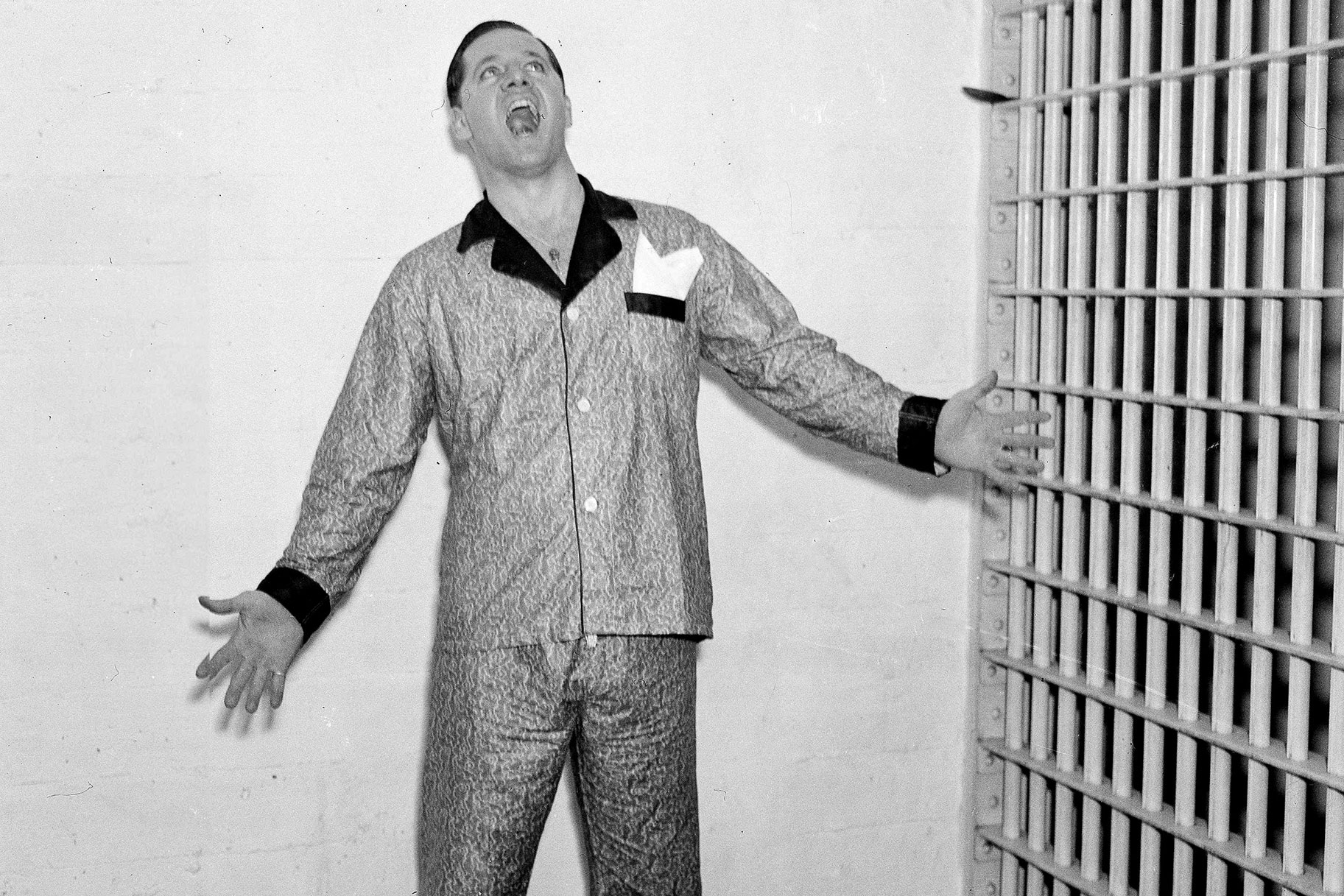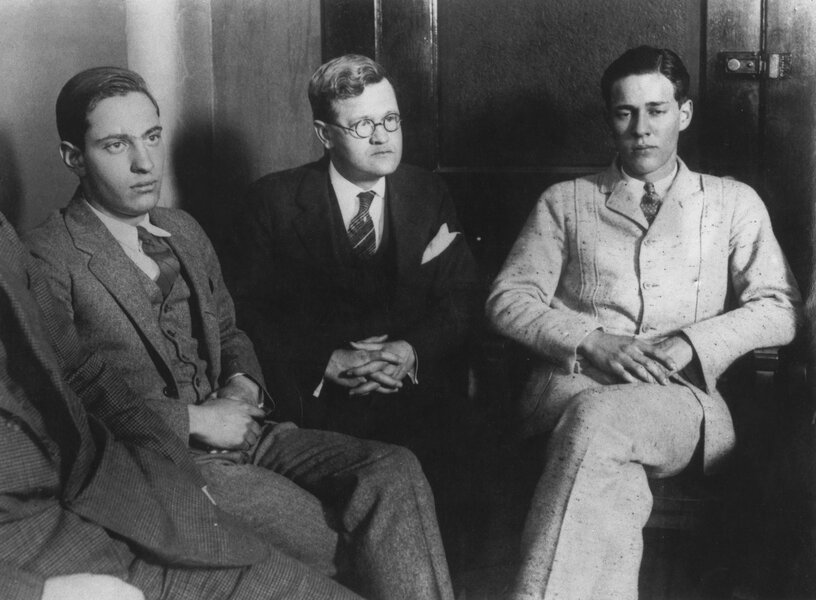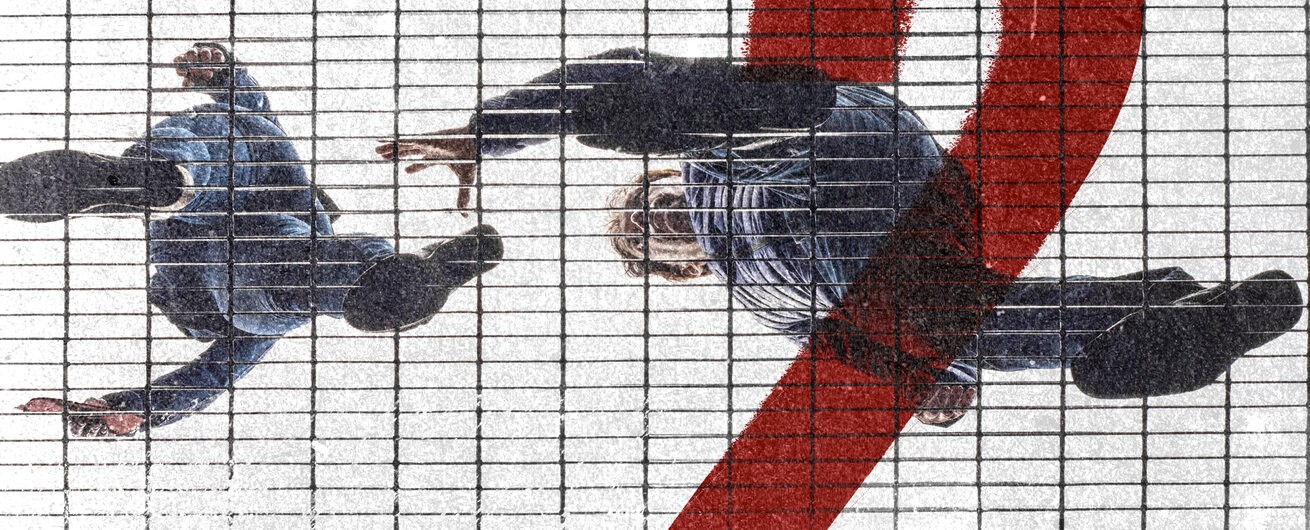Create a free profile to get unlimited access to exclusive videos, breaking news, sweepstakes, and more!
Is Gay Panic Still An Excuse For Murder In The Courtroom?
Among typical motives for murder — lust, greed, hatred — so-called "gay panic" has also been used to explain lethal actions in the past. Is it still used in the courtroom?

Dr. Peter Morrall, a sociologist and author of "Madness and Murder," says that almost all motives for murder can be categorized into one of the "Four Ls" — Lust, Love, Loathing and Loot. And, of course, most murderers, no matter how depraved or misguided their actions, do often have a material or romantic motivation behind the crime that lands them behind bars.
On Aug. 25, Oxygen will premiere a new eight-episode series “Killer Motive,” from the producers of NBC’s Dateline, and hosted by award-winning journalists Stephanie Gosk and Troy Roberts. Each hour-long episode will uncover dark and twisted motives, from vengeance to jealousy to greed that led to gruesome killings.
Oxygen recently spoke with author James Polchin, whose new book, “Indecent Advances: A Hidden History of True Crime and Prejudice Before Stonewall, explores how society’s intolerance allowed so-called “gay panic” to become one recognized motive for murder.
'Gay Panic' Killings Of The Past
In September 1933, Lawrence Shead, 35, a movie theatre manager, was found in his New Jersey apartment with his head beaten in by an electric iron. Just days later in New Orleans, businessman Sheffield Clark, 67, was found in a hotel room, propped up in his underwear, beaten and strangled to death.
The perpetrator in both cases was Kenneth Neu. As explained in “Indecent Advances: A Hidden History of True Crime and Prejudice Before Stonewall,” Neu, 26, was described by witnesses as dark-complexioned, with “movie-star good looks.” He was drifting around on the East Coast, hoping to become a star.
His victims were both likely closeted homosexuals. When Neu was picked up by police near the Holland Tunnel, roughly a week after the discovery of Clark’s body, he had blood on his clothes. According to a contemporaneous New York Times article, when an officer asked about the blood, Neu smiling, promised him “a sensation,” if he were allowed to wash up.
He made good, and confessed to both slayings without blinking an eye or breaking his smile.
And, according to Polchin, Neu had good reason to maintain his calm demeanor, given his planned defense — and the times he was living in. “Gay panic,” or a heterosexual man reacting violently when a gay man allegedly comes on to him, was — and to some extent, continues to be — thought of as a legitimate motive for killing another person.
Police in New Jersey, according to Polchin, “admitted a strong case of self-defense could be offered,” because of Shead’s sexuality. Neu claimed that the man 10 years his senior had tried to ply him with strong drinks, with “ulterior motives” — Shead “threw his arms around [Neu’s] waist,” and a fight ensued, which ended with Shead’s head stove in with the iron.
Neu claimed to have been “terribly frightened,” and left the apartment in a daze, with Shead’s belongings. In a bold move, he would later show up to court wearing one of Shead's suits.
The public swarmed the Orleans Parish courthouse for Neu's trial on Dec. 13, 1933, according to Polchin, and Neu’s placid — even cheerful — confession to both murders left only one question for the jury to decide: Was he sane at the time he killed both older, gay men?.
“The idea was really taking hold,” Polchin told Oxygen.com. “Local municipalities were creating their own sex-crime laws and the FBI was taking an interest in creating files on homosexual men. All homosexual men got wrapped up into this panic.”
Homosexuality itself was considered as much of a menace as a killer like Neu.
Ironically, Neu’s defense that he was resisting his victims’ advances — his defense attorney also argued that he had been “mentally abnormal all his life” — may have been the thing that sent him to the gallows. But not for the reason you might think.
“Killing another man who comes on to you, proved, [in the prosecutor's words], ‘beyond doubt that Neu was a normal person,'” Polchin said.
After the guilty verdict was read, Neu asked that photographers shoot him smiling and, on his way out of the courtroom, sang a popular waltz ballad, according to Polchin.
“It was a disturbing moment in a disturbing case, in which the killing of a man because of his flirtation with another man was evidence of the killer’s sanity,” Polchin told Oxygen.com.
One of the early 20th century’s most notorious murders, the killing of 14-year-old Bobby Franks by Nathan Leopold and Richard Loeb in 1924, returned to the headlines more than 10 years later, when Loeb was slashed to death in the prison shower.
He, as well as Leopold, was serving a life-plus-99-years sentence for kidnapping and murdering Franks in what was apparently a “thrill kill.” The highly intelligent, aristocratic young men had a fascination with true crime, and decided to create “the perfect crime,” which would never be solved.
Alfred Hitchcock based his popular 1948 thriller “Rope” on a contemporaneous play about the murder. Hitchcock’s film was coy, dealing only in hints at the fact that Leopold and Loeb were lovers; the press similarly skirted around the sordid edges of the story in 1924.
However, when James Day went to trial in 1936 for killing Loeb, the victim’s sexuality was front-and-center in the courtroom and in press reports. Reporters breathlessly painted pictures of “nude combatants engaged in a razor battle,” in detailing the 56 slashes that took Loeb’s life.
Day insisted that Loeb had the razor first, and came onto him in the shower — “He brought it on himself,” he told the court. Meanwhile, a newspaper declared that Loeb’s death came about because of Loeb’s “persistence in pursuing [him] over a long period with improper advances.” Another paper called them “indecent advances.”
Day panicked after Loeb’s alleged advances, and that made him normal, according to defense attorneys.
“They were much more direct about describing [Loeb] as a sexual pervert, to try to situate that crime within changing ideas about homosexuality as a criminal threat in the 1930s,” Polchin said. “The murder really gave the press the opportunity to recall the sensational crime and reinforce Loeb as a traumatizing force in society.”
A prison doctor bolstered Day’s defense, according to Polchin, when he concluded that Day was suffering from a “panic reaction,” and reassured the court that Day was “sexually normal.”
Day was found not guilty and, according to Polchin, the courtroom erupted in applause when the verdict was read.
“I’m tickled to death,” Day was reported to have said. “I’ve known all along that I did what any other normal man might have done under the same conditions.”
'Gay Panic' Today
The “gay panic” defense did not die off in U.S. courts after the Stonewall uprising, or even into the 2010s, as the full spectrum of sexualities and gender identities became widely accepted in mainstream society, however.
“Straight panic is still a legal defense in most states,” Polchin said.
According to a 2016 analysis by the UCLA School of Law’s Williams Institute, such defenses have been documented in court opinions in about half of the states, although the defenses are not enshrined in penal codes.
“The gay and trans panic defenses are rooted in irrational fears based on homophobia and transphobia, and send the wrong message that violence against LGBT people is acceptable,” the study’s authors wrote.
And, the LGBT Bar Association says that the gay panic motive has been used successfully as recently as 2018 to mitigate murder charges down to criminally negligent homicide. Even if juries are told not to listen to the “panic” defenses, the “implicit homophobic bias of hearing the defense at all can still influence the jury’s decision,” according to the association. “For example, in cases where perpetrators are not acquitted as a result of a gay and trans ‘panic’ defense, the jury may still deadlock because it is unable to shake the inherent homophobia of the defense.”
If you’re looking for more disturbing motives for murder, tune in on Sunday, Aug. 25, at 7 p.m. ET/PT when Oxygen premieres “Killer Motive."
Stephanie Gosk and Troy Roberts will each host four episodes, in which they’ll focus on the reasons why a particular killing occurred and explore how investigators uncovered the motive in order to crack the case. From a staged suicide to a family massacre, Gosk and Roberts strive to understand each crime’s motive and to shed light on what drove the killers. They conduct on-the-ground inquiries, returning to the crime scenes and sitting down with victims’ friends and family, law enforcement, attorneys, psychologists, and even the killers themselves– to uncover the story of how justice was sought and ultimately attained. At the core of their investigative reporting is the pursuit of a deeper understanding of the relationships behind the horrific killings and of the psychology of the people who committed them.



















